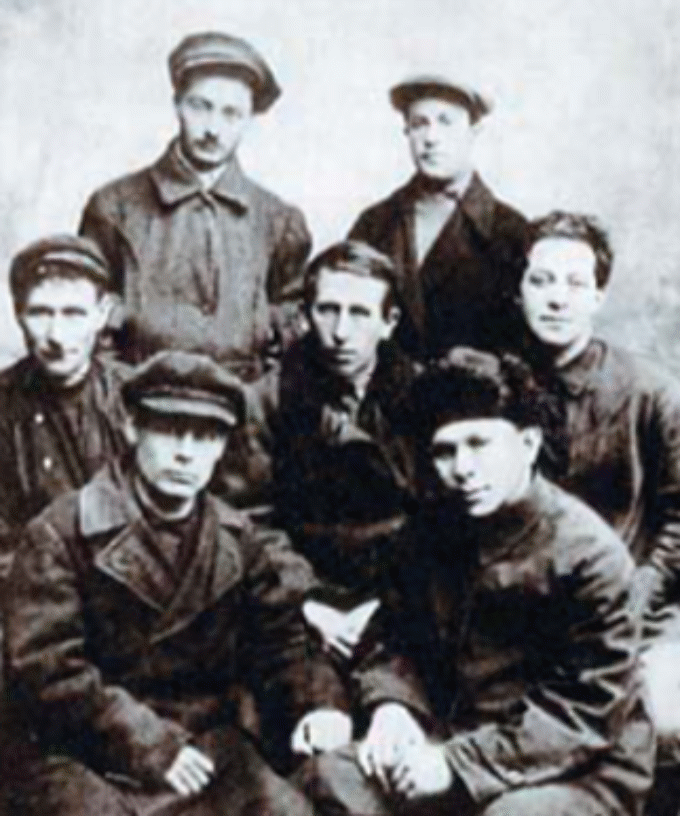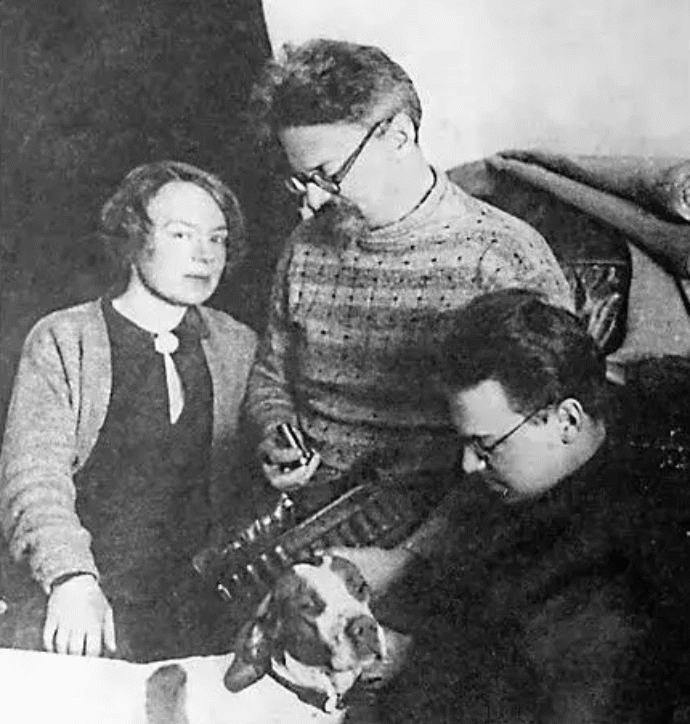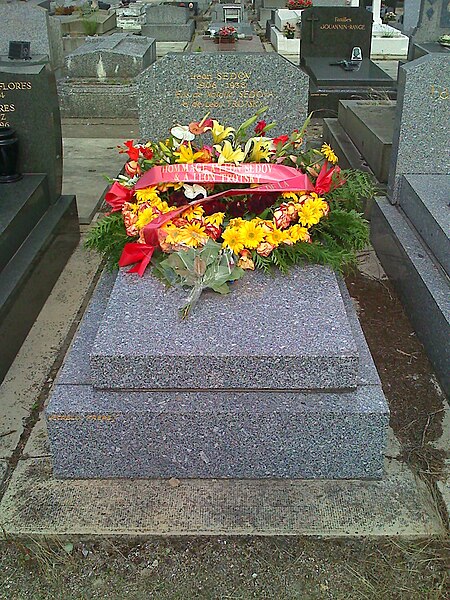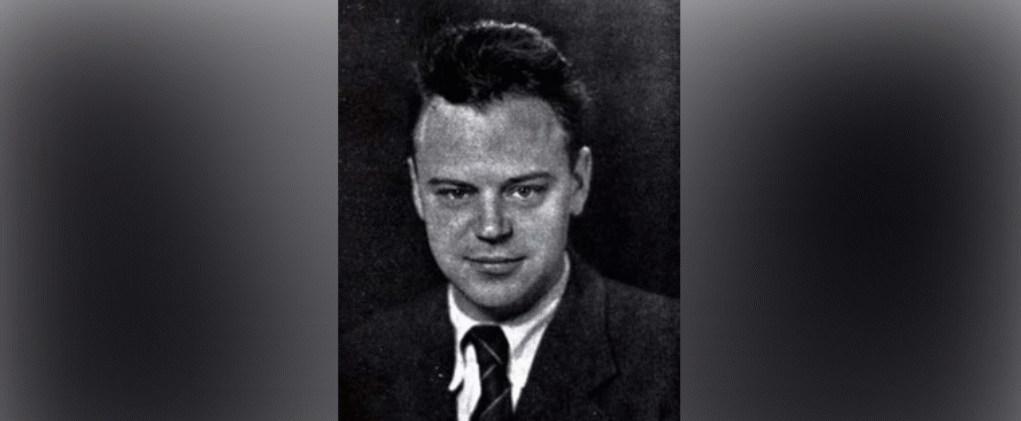By Greg Oxley, Paris
Leon Sedov, the son of Leon Trotsky, was a leading figure in the struggle to defend the authentic ideas of communism, against the Stalinist bureaucracy in the USSR and against the political degeneration of the Communist International. He died on February 16, 1938, the victim of a murderous ambush organised and executed by the GPU, Stalin’s political police. Like hundreds of thousands of revolutionary activists, in the USSR and across the world, Leon Sedov paid with his life, by the hand of Stalin’s executioners, for his dedication to the cause of the international working class.
Leon Sedov was born in 1906, at a time when his father was still incarcerated in the Peter and Paul Fortress for his leading role in the Russian Revolution of 1905. Exiled to Siberia, Trotsky successfully escaped. He soon settled in France, first in Sèvres, on the south-western periphery of the capital, then in Paris itself, with his wife Natalia Sedova and their son Leon Sedov. Trotsky’s internationalist activity against the war led to his expulsion from French territory in 1916. After spending some time in Spain and then in the United States, the family finally managed to return to Russia during the revolution in May 1917.
Sedov joins the Bolshevik “oppositionists” in 1923
In 1923, at the age of 17, Sedov joined the “oppositionists” who, in the Bolshevik Party, fought against the bureaucratic direction taken by Stalin, Kamenev and Zinoviev, among others. He became one of the main leaders of the Opposition in the ranks of the Komsomol (Young Communists).
At the beginning of 1928, Trotsky was once again on the road to exile, this time under the hammer of the bureaucratic repression led by Stalin. Sedov and his mother Natalia Sedova choose to follow him. From Alma-Ata, in Kazakhstan, it was Leon Sedov who set up the necessary connections for the continuation of the ideological struggle in the Party and the International. Thus, Trotsky was able to follow the impact on the party ranks of his famous Critique of the Draft Program, at the 6th Congress of the International in 1928. In this revolutionary platform, he defended the ideas and program of internationalism against the reactionary theory of “socialism in a single country”.

Sedov takes charge of the material organisation of the life of deportees and of establishing links between exiled activists. After the expulsion of his father to Turkey in February 1929, Sedov was in charge of collecting information and correspondence from the prisons and places of exile of communists opposed the bureaucratic degeneration of the Soviet regime. He also took responsibility for the content and publication of the Bulletin of the Opposition, and its clandestine circulation within the USSR.
In February 1931, Sedov left Turkey for Berlin. In the extremely dangerous context of the rise of Hitler’s fascist movement, he played a central role in the organization of the German section of the Opposition. He organised a clandestine liaison network and the exchange of documents between Berlin and the USSR. On several occasions, he narrowly escaped the clutches of fascist militiamen.

He settled in Paris in April 1933, and prepared for the arrival of his father, who stayed in France between July 1933 and June 1934, when he was once again expelled from France, this time to Norway. Sedov continued his work for the Bulletin and participated in the French section of the Opposition. He founded the Committee to Combat Repression in the USSR.
Sedov was a key target of Stalin’s Moscow trials
The first “Moscow trial” opened in August 1936. Sedov, with his father, occupied a central place in the barrage of slander and lies set up against the accused. In his Red Book of the Moscow Trials, Sedov dismantled, point by point, the web of falsification woven around the victims of prosecutor Vyshinsky. But Stalin’s murderous grip was tightening around Sedov. And he knew it. “By making me one of the main defendants in the two trials,” he wrote shortly before his death, “Stalin pursued a precise goal. It is likely that he will not limit himself to accusations. I therefore want to warn public opinion that I am in no way inclined to commit suicide or disappear. If something happens to me, the cause will be found in Stalin and nowhere else.”
In 1935, a certain Mordka Zborowski, known as Étienne, infiltrated the French section of Trotsky’s supporters, with the mission of getting closer to Sedov and monitoring his movements. Another GPU agent, Lola Estrine, provided part-time secretarial support for Sedov, who is followed day and night. Two other GPU agents, Smirenski and Ducomet, occupied an apartment at 28 Rue Lacretelle (Paris 15th arondissement), which adjoins that of Sedov, at number 26 of the same road. In January 1937, informed by Zborowski, agents Smirenski, Ducomet and Renata Steiner waited for Sedov in a hotel near Mulhouse railway station, where the latter had made an appointment with a lawyer. But in the end, Sedov, wary of a trap, does not go to Mulhouse. He undoubtedly escaped a first attempt to assassinate him. But it’s only a postponement.
A year later, following intense abdominal pain and following the advice of “Etienne” Zborowski, Sedov made the mistake of having an operation in a Russian clinic in the 16th arrondissement of Paris. The clinic housed several GPU agents, including the director of the establishment. The surgery goes well. But strangely, after four days of normal convalescence, Sedov suddenly falls into a state of delirium. His physical health deteriorated suddenly, and he died on February 16, 1938. Ironically, Leon Sedov had previously written of how he had to be wary of all the people he worked with, and that Etienne, who was directly responsible for setting this fatal trap, was one of the few people he felt he could trust completely.
Leon Trotsky’s tribute to his son, Leon Sedov
Shortly after the death of his son and comrade, Trotsky wrote: “Of this elder generation of revolutionaries, into whose ranks we entered at the end of the last century, on the road to the revolution, all, without exception, have been swept from the scene. What the Tsar’s prisons, rigorous deportations, the dire needs of years of emigration, civil war and diseases could not do, Stalin has done in recent years, as the most evil scourge of the revolution. After the older generation, the best part of the next generation was wiped out, that is to say, that which was born in 1917 and which received its training in the 24 armies of the revolutionary front. Leon himself only escaped by miracle: thanks to the fact that he accompanied us in deportation and then in Turkey. […]

Martin Ottmann, CC BY-SA 3.0 via Wikimedia Commons.
“Before killing him, they did everything they could to slander and blacken our son in the eyes of contemporaries and generations to come. Stalin and his acolytes tried to transform Leon into an agent of fascism and a secret supporter of capitalist restoration in the USSR, an organizer of railway disasters and a murderer of workers. Great were the efforts of these scoundrels! Tons of Thermidorian mud fall on his young shoulders without leaving a single stain. Leon was essentially a clean and honest human being.”
“He had no reason to reproach himself, nothing to hide. Moral rectitude was the common thread of his whole character. He served the cause of the oppressed without wavering and, through it all, he remained true to himself. From the hands of nature and history, he was born a man of heroic character. Faced with the great and terrible events that are approaching, we will need such beings.”
Leon Sedov is buried in the Thiais cemetery, in the southern suburbs of Paris. Left Horizons pays tribute to his struggle, to his example, and to his life, entirely dedicated as it was to the cause of international socialism.



